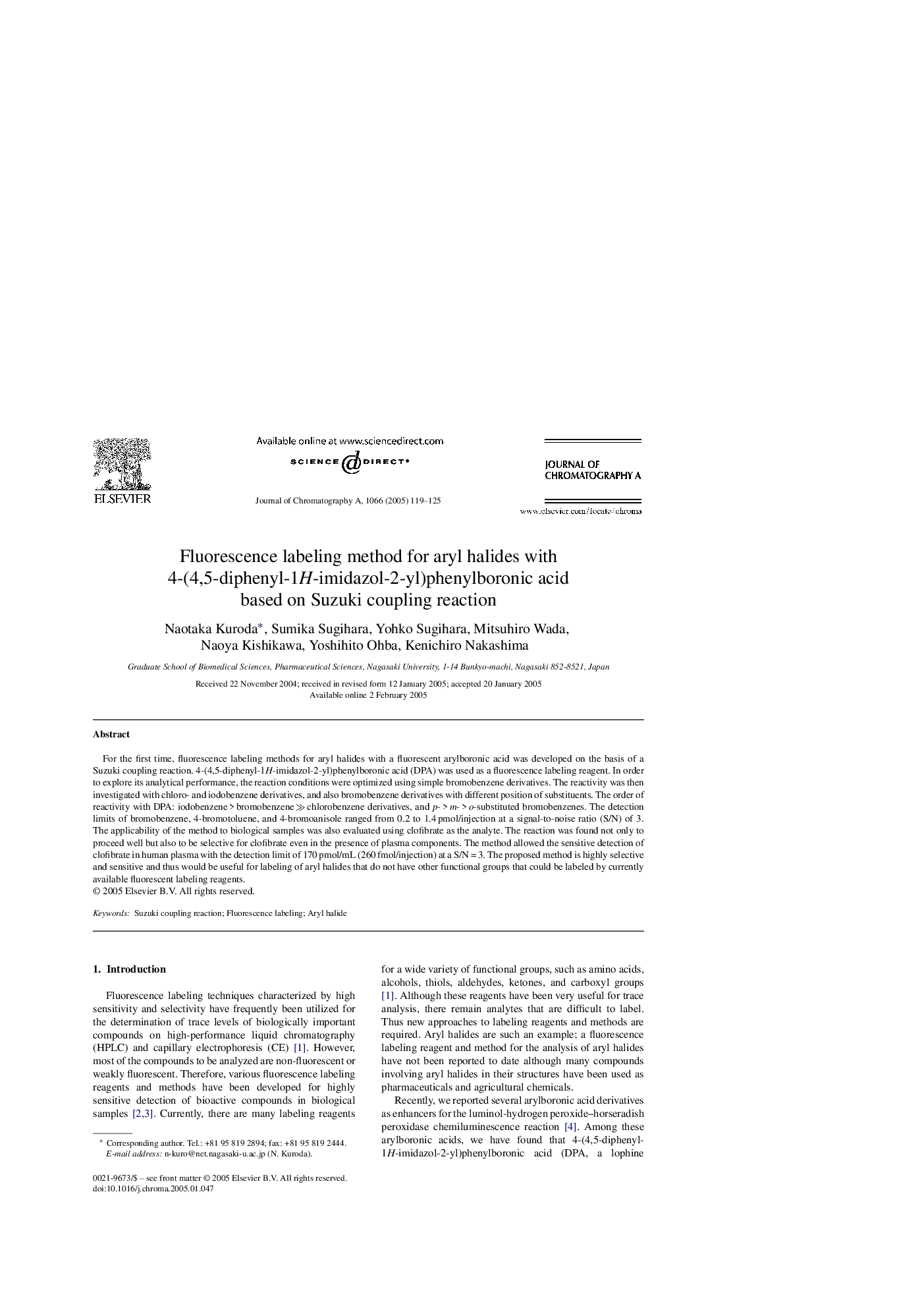| Article ID | Journal | Published Year | Pages | File Type |
|---|---|---|---|---|
| 9749296 | Journal of Chromatography A | 2005 | 7 Pages |
Abstract
For the first time, fluorescence labeling methods for aryl halides with a fluorescent arylboronic acid was developed on the basis of a Suzuki coupling reaction. 4-(4,5-diphenyl-1H-imidazol-2-yl)phenylboronic acid (DPA) was used as a fluorescence labeling reagent. In order to explore its analytical performance, the reaction conditions were optimized using simple bromobenzene derivatives. The reactivity was then investigated with chloro- and iodobenzene derivatives, and also bromobenzene derivatives with different position of substituents. The order of reactivity with DPA: iodobenzene > bromobenzene â«Â chlorobenzene derivatives, and p- > m- > o-substituted bromobenzenes. The detection limits of bromobenzene, 4-bromotoluene, and 4-bromoanisole ranged from 0.2 to 1.4 pmol/injection at a signal-to-noise ratio (S/N) of 3. The applicability of the method to biological samples was also evaluated using clofibrate as the analyte. The reaction was found not only to proceed well but also to be selective for clofibrate even in the presence of plasma components. The method allowed the sensitive detection of clofibrate in human plasma with the detection limit of 170 pmol/mL (260 fmol/injection) at a S/N = 3. The proposed method is highly selective and sensitive and thus would be useful for labeling of aryl halides that do not have other functional groups that could be labeled by currently available fluorescent labeling reagents.
Related Topics
Physical Sciences and Engineering
Chemistry
Analytical Chemistry
Authors
Naotaka Kuroda, Sumika Sugihara, Yohko Sugihara, Mitsuhiro Wada, Naoya Kishikawa, Yoshihito Ohba, Kenichiro Nakashima,
